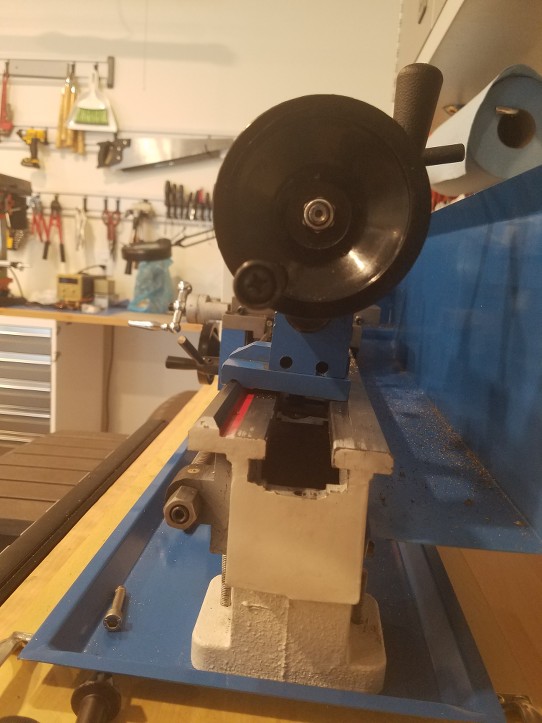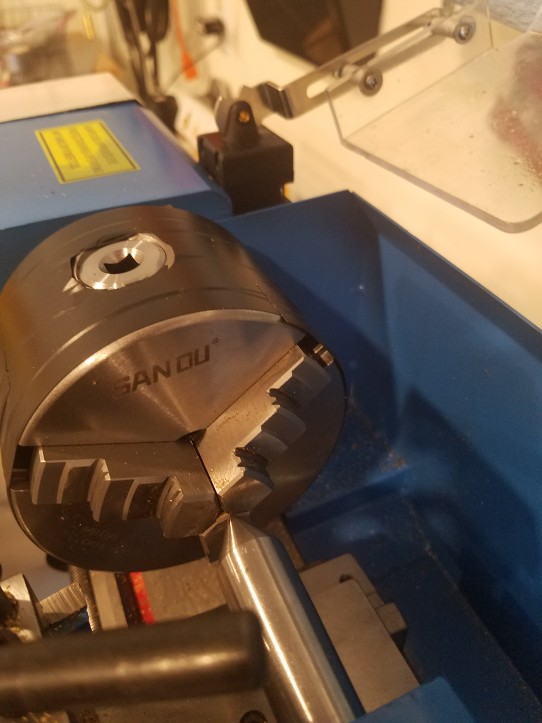The tailstock for my 7x14 appears to be pretty standard for this level of lathe. It is attached to the bed by a bolt the goes through the bed and uses a small square metal plate with a nut to secure it to the bed. I have noticed that if I tighten the nut too much it won't slide along the bed. If It is too loose the entire tailstock becomes "sloppy". Is there some rule-of-thumb on how tight this nut should be and should there be a lock washer to keep the nut from becoming too loose? Or should I use loctite or something to secure it once it is set?
A more important issue is that if I insert a live center in the tailstock, It doesn't align with the center of the chuck. It is a couple mm below and to the right of the chuck center. Is there a way to adjust how the tailstock sits on the bed. The left side of the tailstock appears to sit slightly lower than the right side which I guess accounts for it being off. Should I attempt to attach a shim to one side to even it out?
As always thanks for any guidance you can provide
A more important issue is that if I insert a live center in the tailstock, It doesn't align with the center of the chuck. It is a couple mm below and to the right of the chuck center. Is there a way to adjust how the tailstock sits on the bed. The left side of the tailstock appears to sit slightly lower than the right side which I guess accounts for it being off. Should I attempt to attach a shim to one side to even it out?
As always thanks for any guidance you can provide






